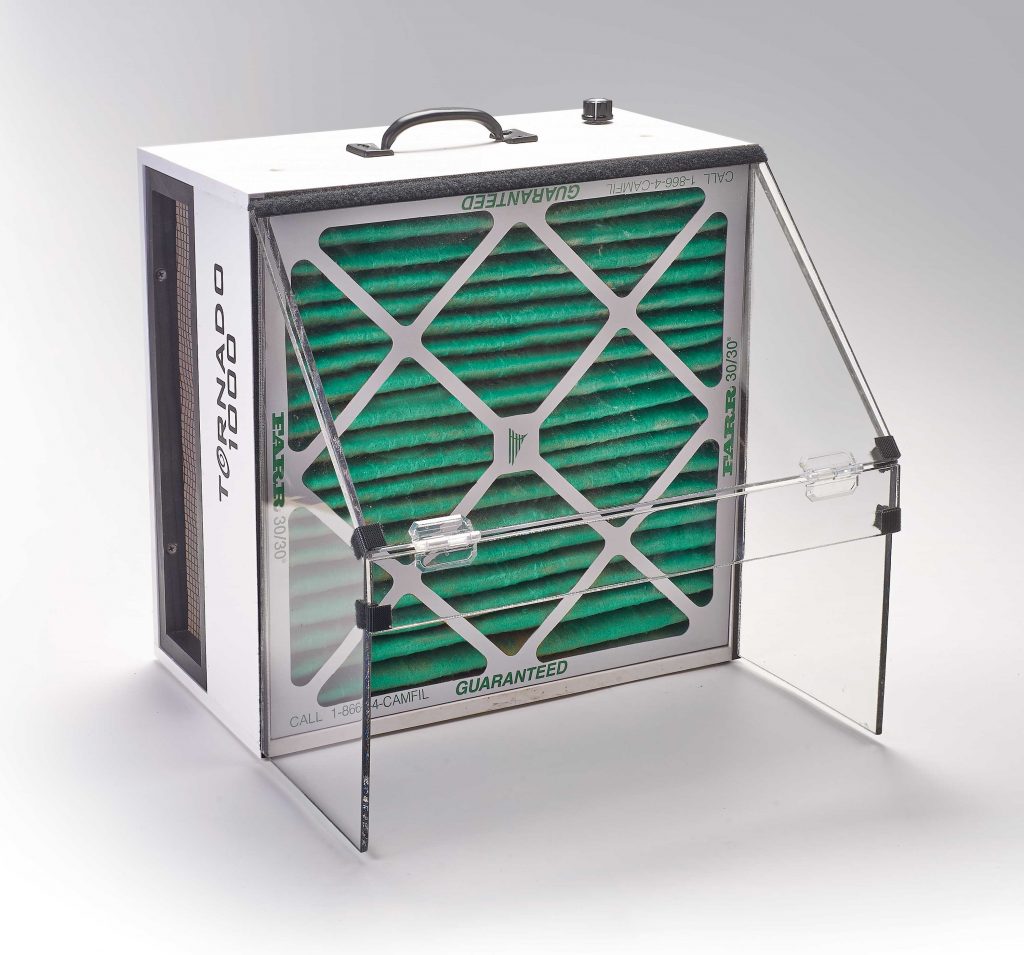 Tabletop dust collector cleans up after most aggressive bits
Tabletop dust collector cleans up after most aggressive bits
By Bob Duncan
Several commercial tabletop dust collectors are available, as are a host of plans for shop-made versions. The Tornado 1000, which is made in the USA by SMC Enterprises, stands out thanks to its large working area and the vast amount of air it can move. The Tornado 1000 took everything I could throw at it and kept going!
SMC Enterprises was begun by Steve Chlupsa and his brother Andy in the mid-1980s. They created the Optima line of woodburners and the SafeAir dust collector unit, which was popular during the 1990s. After selling the Optima line to PJL Enterprises in 2000, Steve got out of the dust collector business—until Andy wanted to upgrade his carving equipment. Steve went back to the drawing board.
The aptly named Tornado 1000 is built around a state-of-the-art 10″-diameter variable-speed impeller designed not to lose power or suction as it pulls 1,000 cubic feet of air per minute (CFM) through the filter.The impeller fan is computer controlled, so flipping the switch triggers a self-diagnosis before starting the fan. Once the fan starts, it quickly moves up to speed. I could hear the air moving when I wasn’t using a tool, but once I started working, the tool drowned out the dust collector. (The dust collector has a noise rating of about 63 decibels (db) at low speed, 76db at medium speed, and 84db at high speed. A typical flexible shaft tool is rated at 68db, and a typical rotary tool comes in around 77db.)
I had a hard time finding a tool the Tornado 1000 couldn’t keep up with, and I tried a variety of tools of increasing sizes and dust production capacities without changing or cleaning the filter. The Tornado 1000 easily kept pace with an aggressive carbide-point bit in a rotary tool. After 20 minutes of carving while sitting comfortably outside the acrylic shield, there was almost no dust on the table, but dust covered the filter. The Farr 30/30 filter is a high-efficiency model that will catch most particles over 6 microns and is designed to provide good airflow even as it collects dust and debris.
Next, I moved on to a carbide point disc in Foredom’s new angle grinder handpiece. Even without changing or emptying the filter, the Tornado 1000 kept the workbench pretty clean. When I switched to a carbide point disc in a full-size angle grinder, the unit struggled a bit to keep up with the volume of dust I was creating. To take the test to the absurd, I tried Arbortech’s new Microplane disc, which creates shavings rather than dust. This is beyond any normal expectation for the unit, but the Tornado 1000 collected about half of the shavings and all of the fine dust. To test the unit’s ability to collect fine dust, I used an Abradenet disc in the mini angle grinder. I sat a comfortable distance from the shield, and the unit easily caught all of the sanding dust.
After completing my tests, I used a shop vacuum and an air compressor to restore the filter to nearly new condition. I’m sure the filter will break down over time; when it does, I suggest replacing it with another Farr 30/30 filter, which is available for $12.95, or a MERV11 filter, which catches particles down to 3 microns (useful when sanding or using diamond or ruby bits) and is available for $16.95.





